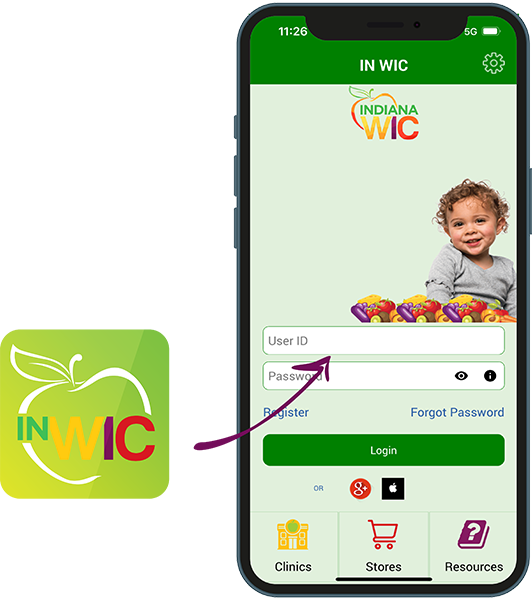h2 hide
What is WIC?
Who’s eligible?
- Pregnant women;
- Postpartum parents (up to six months after delivery);
- Breastfeeding parents (up to one year after delivery);
- Infants (babies under the age of one);
- Children under the age of five.
You must live in Indiana and meet the income guidelines which are listed below or at wic.in.gov.
What does WIC provide?

- Healthy foods designed to meet special nutrition needs including seasonal fresh produce benefits to purchase from local farmers;
- Nutrition and health screening and assessment;
- Nutrition education and counseling;
- Breastfeeding support, including breast/chestfeeding parents receiving additional nutritional foods from WIC, one-on-one support from Peer Counselors, and access to lactation professionals;
- Referrals to other Indiana health, family, and social services.
How does WIC work?
WIC benefits may be used at Indiana WIC approved stores to purchase:
- Milk and milk products
- Fruits and vegetables
- Eggs
- Cereal
- Whole grains (bread, rice, tortillas)
- Tofu
- Baby food
- Infant formula
Why use the INWIC App?
The INWIC App makes it easier to manage your benefits!


Income eligibility
Families already receiving Medicaid, SNAP, or TANF are income eligible for the WIC program.
Household* size
Annual income, up to $ (total before deductions)
1
2
3
4
5
6
7
8
Monthly income, up to $ (total before deductions)
1
2
3
4
5
6
7
8
Weekly income, up to $ (total before deductions)
1
2
3
4
5
6
7
8
If you are pregnant, you may count yourself as two (2).
For households with more than 8 members, add $8,732 annual income for each additional member.
*Household means a group of people (related or not) who are living as one economic unit.
Income eligibility
| Household* size | Annual income, up to $ (total before deductions) |
Monthly income, up to $ (total before deductions) |
Weekly income, up to $ (total before deductions) |
|---|---|---|---|
| 1 | $27,861 | $2,322 | $536 |
| 2 | $37,814 | $3,152 | $728 |
| 3 | $47,767 | $3,981 | $919 |
| 4 | $57,720 | $4,810 | $1,110 |
| 5 | $67,673 | $5,640 | $1,302 |
| 6 | $77,626 | $6,469 | $1,493 |
| 7 | $87,579 | $7,299 | $1,685 |
| 8 | $97,532 | $8,128 | $1,876 |
If you are pregnant, you may count yourself as two (2).
For households with more than 8 members, add $9,953 annual income for each additional member.
*Household means a group of people (related or not) who are living as one economic unit.